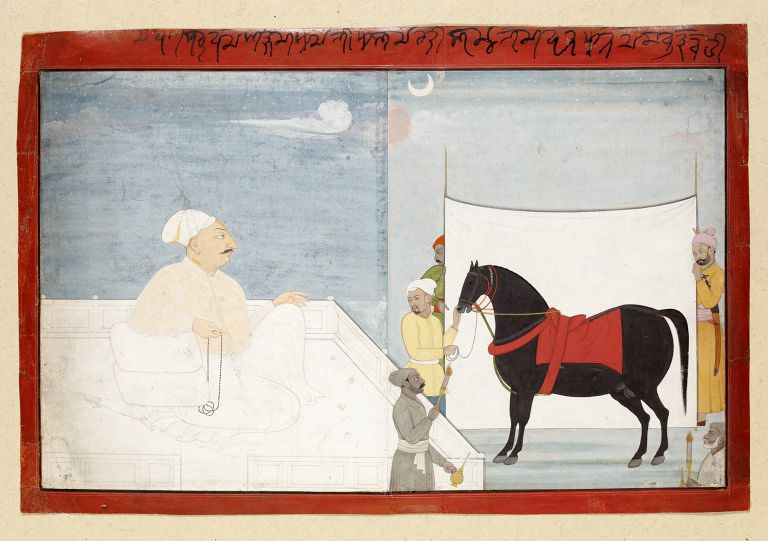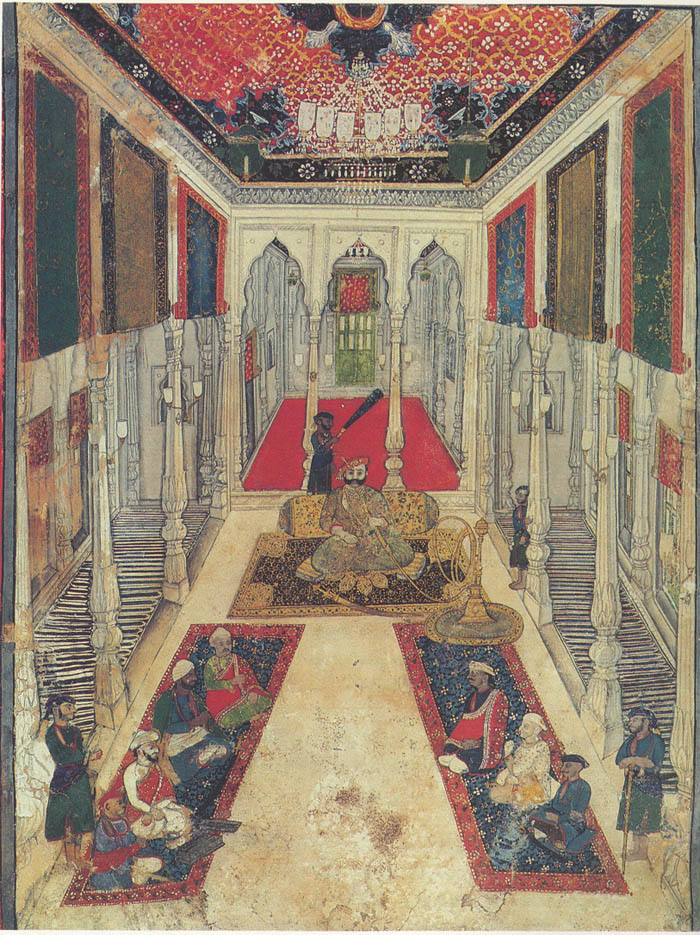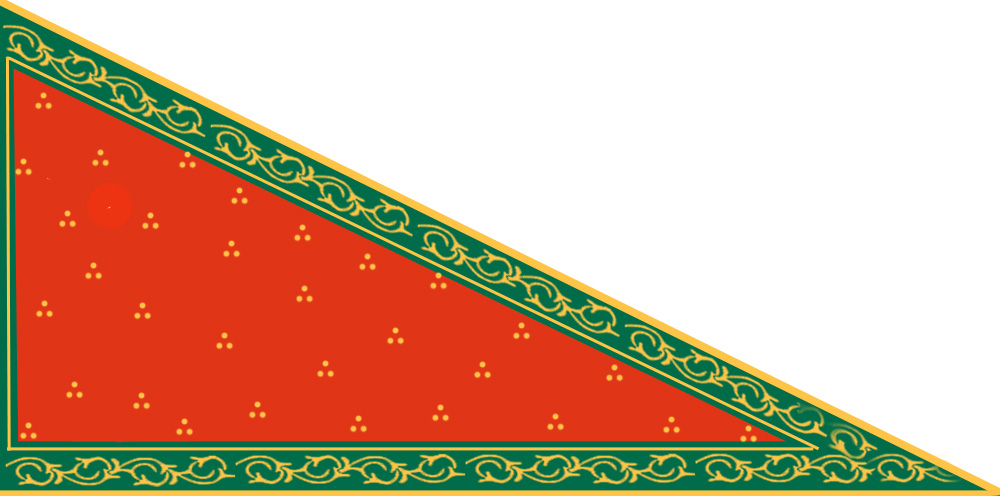|
Siba State
Siba State, later known as Dada-Siba jagir, was a small independent Indian hill state in the Lower Himalayas. It was centered on the town of Dadasiba, Pragpur ''tehsil'', Kangra district, in modern-day Himachal Pradesh. The state was founded in ca.1450. In 1849 the territory of Datarpur was added to Siba Jagir (1/3 part of land of Mian Devi Singh) and annexation, annexed by the British Raj as 'Dada-Siba'. Rest remained in the possession of Raja Ram Singh son of Raja Gobind Singh. Location Siba was a small hill state that bordered Jaswan, Jaswan State to the south, the Punjab Plains to the southwest and west, Guler State to the north, and Datarpur and Kangra State, Kangra states to the east. The northern border was marked by the Beas River and the southern demarcation was naturally marked by a steep ridge consisting of courses of water and boulders. History Siba State was founded by Raja Sibaran Chand, the younger brother of the raja of Guler State in circa 1450. Thus, Siba ... [...More Info...] [...Related Items...] OR: [Wikipedia] [Google] [Baidu] |
British India
The provinces of India, earlier presidencies of British India and still earlier, presidency towns, were the administrative divisions of British governance in South Asia. Collectively, they have been called British India. In one form or another, they existed between 1612 and 1947, conventionally divided into three historical periods: *Between 1612 and 1757, the East India Company set up "factories" (trading posts) in several locations, mostly in coastal India, with the consent of the Mughal emperors, Maratha Empire or local rulers. Its rivals were the merchant trading companies of Portugal, Denmark, the Netherlands, and France. By the mid-18th century three ''Presidency towns'': Madras, Bombay and Calcutta, had grown in size. *During the period of Company rule in India, 1757–1858, the Company gradually acquired sovereignty over large parts of India, now called "Presidencies". However, it also increasingly came under British government oversight, in effect sharing sovereig ... [...More Info...] [...Related Items...] OR: [Wikipedia] [Google] [Baidu] |
Bilaspur State (princely State)
Bilaspur State or Kahlur State, sometimes Kahloor Riyasat, was a kingdom (697–1849) and later princely state (1849–1948) in the Punjab Province (British India), Punjab Province ruled by a separate branch of Chandravanshi Chandel (Rajput clan), Chandel rajput dynasty. Raja Bir Chand 697–730 was the founder of the state but it was named Kahlur only after the Construction of Kahlur Fort by Raja Kahal Chand around 890–930CE and Raja Anand Chand the 44th Raja was the last ruler. The state was earlier known as Kahlur Fort, Kahlur Riyasat and was later renamed Bilaspur, Himachal Pradesh, Bilaspur. It covered an area of , on the name of Sage Bias (from Biaspur later became Bilaspur) and had a population of 100,994 according to the 1931 Census of India. The last ruler of Bilaspur State acceded to the Dominion of India, Indian Union on 12 October 1948. Bilaspur State remained Bilaspur Province in independent India until 1950 when the province was briefly renamed "Bilaspur State ... [...More Info...] [...Related Items...] OR: [Wikipedia] [Google] [Baidu] |
Raja
Raja (; from , IAST ') is a noble or royal Sanskrit title historically used by some Indian subcontinent, Indian rulers and monarchs and highest-ranking nobles. The title was historically used in the Indian subcontinent and Southeast Asia. The title has a long history in South Asia and History of Southeast Asia, Southeast Asia, being attested from the ''Rigveda'', where a ' is a Rigvedic tribes, ruler, see for example the Battle of the Ten Kings, ', the "Battle of Ten Kings". The title has equivalent cognates in other Indo-European languages, notably the Latin Rex (title), Rex and the Celtic languages, Celtic Rix. Raja-ruled Indian states While most of the British Raj, Indian salute states (those granted a Salute#Heavy arms: gun salutes, gun salute by the The Crown, British Crown) were ruled by a Maharaja (or variation; some promoted from an earlier Raja- or equivalent style), even exclusively from 13 guns up, a number had Rajas: ; Hereditary salutes of 11-guns : * the R ... [...More Info...] [...Related Items...] OR: [Wikipedia] [Google] [Baidu] |
Radha Krishna
Radha-Krishna (IAST , ) is the combined form of the Hindu god Krishna with his chief consort and ''shakti'' Radha. They are regarded as the feminine as well as the masculine realities of God and gender in Hinduism, God, in several Krishnaism, Krishnaite traditions of Vaishnavism. In Krishnaism, Krishna is referred to as ''Svayam Bhagavan'' and Radha is illustrated as the primeval potency of the three main potencies of God, ''Hladini'' (immense spiritual bliss), ''Sandhini'' (eternality), and ''Samvit'' (existential consciousness), of which Radha is an embodiment of the feeling of love towards Krishna (''Hladini''). With Krishna, Radha is acknowledged as the Supreme Goddess. Krishna is said to be satiated only by devotional service in loving servitude, personified by Radha. Various devotees worship her to attain Krishna via her. Radha is also depicted to be Krishna himself, split into two for the purpose of his enjoyment. As per scriptures, Radha is considered as the complete in ... [...More Info...] [...Related Items...] OR: [Wikipedia] [Google] [Baidu] |
Raja
Raja (; from , IAST ') is a noble or royal Sanskrit title historically used by some Indian subcontinent, Indian rulers and monarchs and highest-ranking nobles. The title was historically used in the Indian subcontinent and Southeast Asia. The title has a long history in South Asia and History of Southeast Asia, Southeast Asia, being attested from the ''Rigveda'', where a ' is a Rigvedic tribes, ruler, see for example the Battle of the Ten Kings, ', the "Battle of Ten Kings". The title has equivalent cognates in other Indo-European languages, notably the Latin Rex (title), Rex and the Celtic languages, Celtic Rix. Raja-ruled Indian states While most of the British Raj, Indian salute states (those granted a Salute#Heavy arms: gun salutes, gun salute by the The Crown, British Crown) were ruled by a Maharaja (or variation; some promoted from an earlier Raja- or equivalent style), even exclusively from 13 guns up, a number had Rajas: ; Hereditary salutes of 11-guns : * the R ... [...More Info...] [...Related Items...] OR: [Wikipedia] [Google] [Baidu] |
Jagir
A jagir (), ( Hindustani: जागीर/جاگیر, ''Jāgīr''), ( Marathi: जहागीर, ''Jahāgīrá'') also spelled as jageer, was a type of feudal land grant in the Indian subcontinent at the foundation of its Jagirdar ( Zamindar) system. It developed during the Islamic era of the Indian subcontinent, starting in the early 13th century, wherein the powers to govern and collect tax from an estate was granted to an appointee of the state. 13th-century origin and successors This feudal system of land ownership is referred to as the ''jagirdar'' system. The system was introduced by the Sultans of Delhi from the 13th century onwards, was later adopted by the Mughal Empire, the Maratha Empire and continued under the British East India Company. Some Hindu jagirdars were converted into Muslim vassal states under Mughal imperial sway, such as the nawabs of Kurnool. Most princely states of India during the colonial British Raj era were jagirdars such as Mohrampur Jagi ... [...More Info...] [...Related Items...] OR: [Wikipedia] [Google] [Baidu] |
Second Anglo-Sikh War
The Second Anglo-Sikh War was a military conflict between the Sikh Empire and the East India Company which took place from 1848 to 1849. It resulted in the fall of the Sikh Empire, and the annexation of the Punjab region, Punjab and what subsequently became the North-West Frontier Province, by the East India Company. On 19 April 1848, Patrick Alexander Vans Agnew, Patrick Vans Agnew of the civil service and Lieutenant William Anderson of the Bombay European regiment, having been sent to take charge of Multan from Diwan Mulraj Chopra, were murdered there; within a short time, the Sikh troops joined in open rebellion. Governor-General of India James Broun-Ramsay, 1st Marquess of Dalhousie, Lord Dalhousie agreed with Hugh Gough, 1st Viscount Gough, Sir Hugh Gough, the commander-in-chief, that the British East India Company's military forces were neither adequately equipped with transport and supplies, nor otherwise prepared to take the field immediately. He also foresaw the spre ... [...More Info...] [...Related Items...] OR: [Wikipedia] [Google] [Baidu] |
Quid Pro Quo
''Quid pro quo'' (Latin: "something for something") is a Latin phrase used in English to mean an exchange of goods or services, in which one transfer is contingent upon the other; "a favor for a favor". Phrases with similar meanings include: "give and take", " tit for tat", "you scratch my back, and I'll scratch yours", "this for that," and "one hand washes the other". Other languages use other phrases for the same purpose. Origins The Latin phrase ''quid pro quo'' originally implied that something had been substituted, meaning "something for something" as in ''I gave you sugar for salt''. Early usage by English speakers followed the original Latin meaning, with occurrences in the 1530s where the term referred to substituting one medicine for another, whether unintentionally or fraudulently. By the end of the same century, ''quid pro quo'' evolved into a more current use to describe equivalent exchanges. In 1654, the expression ''quid pro quo'' was used to generally refer t ... [...More Info...] [...Related Items...] OR: [Wikipedia] [Google] [Baidu] |
Dhian Singh
Raja Dhian Singh (22 August 1796 – 15 September 1843) was the longest serving wazir of the Sikh Empire, during the reign of Maharajah Ranjit Singh, and the brief rule of four of his successors over four years. He held the office for twenty five years, from 1818 till his assassination. Dhian Singh was a brother of Raja Gulab Singh of Jammu, who later founded the Dogra dynasty when he became Maharaja of the princely state of Jammu and Kashmir under the British Raj. Another brother Suchet Singh also served the empire. The three brothers were collectively known as the "Dogra brothers" in the Sikh Empire, based on their ethnicity. Biography In the turbulent four years following the Ranjit Singh's death on 27 June 1839, Dhian remained at the helm, grappling with a power struggle in which three successive emperors and one empress died suddenly, in the build-up to the First Anglo-Sikh War.Following the coronation of Kharak Singh on 1 September 1839, Dhian launched a palace coup ... [...More Info...] [...Related Items...] OR: [Wikipedia] [Google] [Baidu] |
Annexed
Annexation, in international law, is the forcible acquisition and assertion of legal title over one state's territory by another state, usually following military occupation of the territory. In current international law, it is generally held to be an illegal act.: "Annexation means the forcible acquisition of territory by one State at the expense of another State. It is one of the principal modes of acquiring territory... in contrast to acquisition a) of terra nullius by means of effective occupation accompanied by the intent to appropriate the territory; b) by cession as a result of a treaty concluded between the States concerned (Treaties), or an act of adjudication, both followed by the effective peaceful transfer of territory; c) by means of prescription defined as the legitimization of a doubtful title to territory by passage of time and presumed acquiescence of the former sovereign; d) by accretion constituting the physical process by which new land is formed close to, or b ... [...More Info...] [...Related Items...] OR: [Wikipedia] [Google] [Baidu] |
Sikh Empire
The Sikh Empire was a regional power based in the Punjab, Punjab region of the Indian subcontinent. It existed from 1799, when Maharaja Ranjit Singh captured Lahore, to 1849, when it was defeated and conquered by the East India Company, British East India Company following the Second Anglo-Sikh War. At its peak in the mid-19th century the empire extended from Gilgit and Tibet under Qing rule, Tibet in the north to the Thar Desert, deserts of Sindh in the south and from the Khyber Pass in the west to the Sutlej in the east, and was divided into eight provinces. Religiously diverse, with an estimated population of 4.5 million in 1831 (making it the List of countries by population in 1800, 19th most populous state at the time), it was the last major region of the Indian subcontinent to be annexed by the British Raj, British Empire. In 1799, Ranjit Singh of Sukerchakia Misl captured Lahore from the Sikh triumvirate which had been ruling it Sikh period in Lahore#Sikh triumvirate ... [...More Info...] [...Related Items...] OR: [Wikipedia] [Google] [Baidu] |






